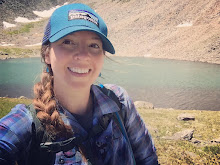Reporting about the Presidio has enabled me to learn a lot about a unique part of San Francisco, a part of the city I might not have otherwise become familiar with. The Presidio has a rich and fascinating history and its development continues to be newsworthy.
The major challenged I faced as a journalist was gaining the confidence to approach people and question them, a challenge that was not made any easier by the suburban environment of the residential areas in the Presidio. However, by the end of the semester I met people through networking and asking questions became second nature.
One of the things that I have most enjoyed about the reporting process has been learning about the Presidio’s military history. There are so many interesting stories and it is a history that is still very visible in the buildings and layout of the park.
I have also greatly enjoyed having a reason to spend a lot of time in the Presidio. It is an incredibly beautiful location with amazing views of the Golden Gate Bridge, the Bay and the city. It is a wonderful feeling to feel as if you are in the country enjoying trails and nature and yet be only minutes away from a bustling city.
Last night, Dec 4, I finished my last interview around 7:30 p.m. It was a very cold night; I made my way to the transit center and waited for the 29 Muni to take me home. The 29 had been faithful in picking me up across the street from my house in the Sunset District and dropping in the Presidio all semester. It was a 20-minute wait and finally, growing numb from the cold, I approached two Muni drivers as they were taking a break, the transit center being the final destination of the inbound 29.
“Do you know how much longer it will be,” I asked.
One of the Muni drivers checked his watch. “ I am scheduled to leave in another three minutes,” he said.
“You know tonight is the last night the 29 will come out here due to the changes in the route, right?” asked the other driver.
I did know and at that moment it felt like an oddly appropriate way to be ending the semester’s project.














